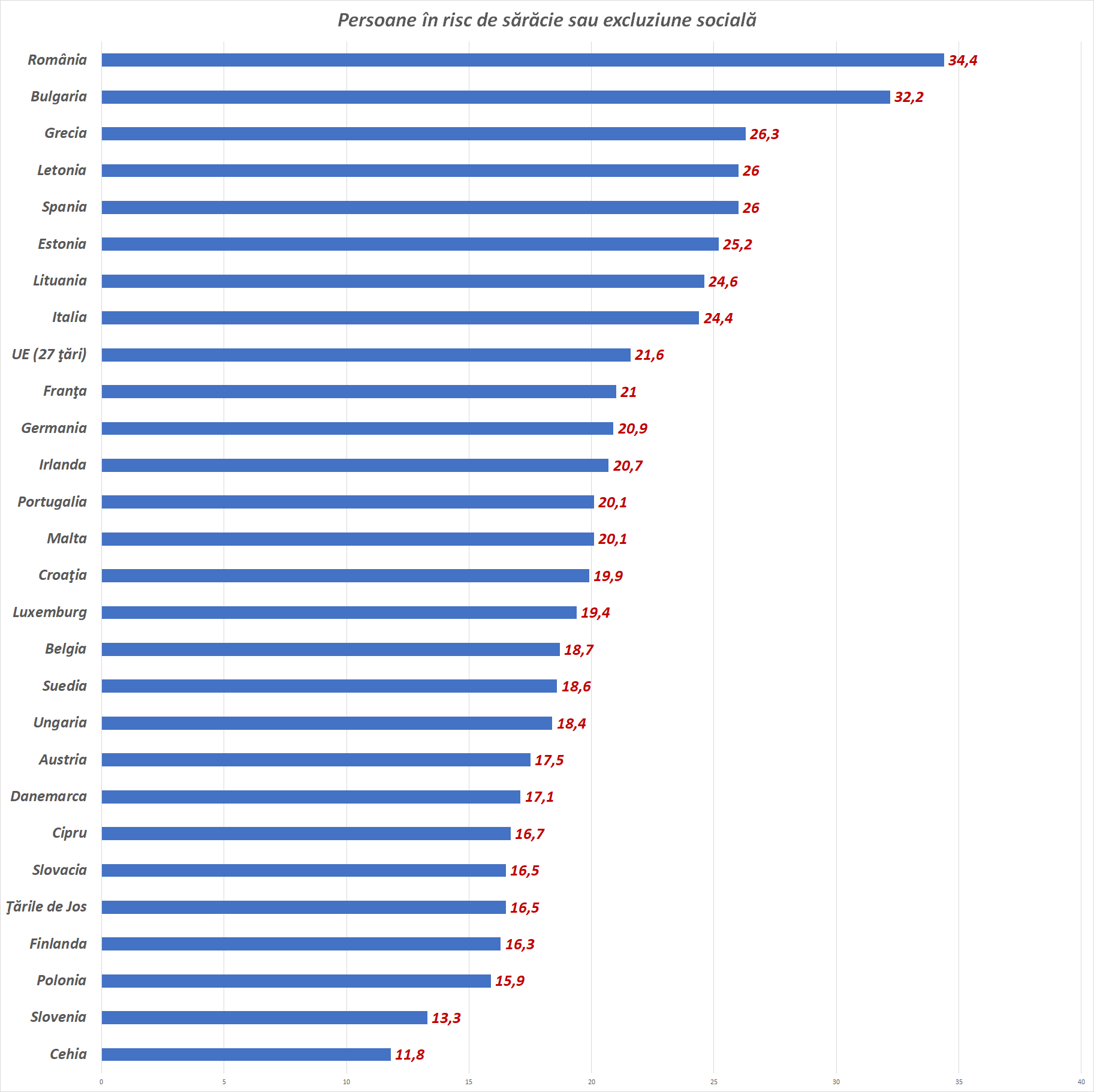
According to data published on Monday by the National Institute of Statistics, Romania has managed to win the title of the European country with the highest share of the population at risk of poverty in the last 8 years, after the Bulgarians managed to eradicate poverty more effectively. .
In the months leading up to an upcoming super-election year, politicians across the political spectrum are taking advantage of this economic vulnerability, promising higher salaries, higher pensions and all kinds of benefits, although a report by an independent organization (the World Bank) points to the fact that such measures have only exacerbated the budget problem in the past , and the strategies that have allowed us to register progress in the direction of poverty reduction in the past “are structurally unsustainable”

Romania’s poverty rate remains the highest in the EU, surpassing countries with similar or lower per capita incomes such as Bulgaria, Croatia, Hungary and Poland, a World Bank report shows.
Weak governance in Romania remains a major constraint on government efficiency and effectiveness, the report’s authors also noted.
Furthermore, the strategies that have made progress toward poverty reduction possible in the past are structurally unsustainable. Much of the reduction in poverty seen in the pre-pandemic years resulted from increased labor and pension incomes as a result of tax, minimum wage and pension reforms.
National at-risk-of-poverty rates are nearly six times higher in rural areas than in urban areas
In particular, the single rate of personal income tax (PIT), social security contributions and value added tax (VAT) were reduced, the scope of VAT exemption was expanded, the minimum wage was increased and the pension system was restructured, all of which resulted in many households escaping from poverty
Poverty is highly concentrated in rural areas, where approximately 70% of Romania’s poor people live. National at-risk-of-poverty rates are nearly six times higher in rural areas than in urban areas. The gap in living standards is wide, with average per capita income in urban areas being more than 60% higher than in rural areas, a widening gap that has barely changed over the past decade.
The gap between urban and rural environments is also visible at the level of public services. In 2020, Romania was the only country in the EU that did not have universal access to running water. While almost 100% of the population is served by water supply in the urban environment, in rural areas only 39% and 15% of the population are connected to the water supply and sewage systems, respectively.
Pupils from the rest of the country will need more than two years of additional training to close the learning gap with their counterparts in Bucharest-Ilfov
Regarding transport infrastructure, despite significant public investment stimulated by EU funds, Romania’s regions are poorly interconnected, and the transport infrastructure competitiveness index is significantly lower than the EU average.
According to the National Health Insurance Service (2020), 15% of the country’s population lacks health insurance, with the proportion higher among those with low incomes. The gap in educational outcomes is also large: to close the learning gap with peers in Bucharest-Ilfov (as measured by standardized test scores), students in the rest of the country would need, on average, more than two years of additional schooling. Furthermore, the Human Capital Index (HCI) at the county level is 0.68 in Bucharest-Ilfov, but drops to 0.51 in the neighboring County of Giurgiu, indicating an almost 20% gap between the potential productivity of children born in the two COUNTIES.
However, these measures increased the pressure on the state budget, increasing imbalances in it. In addition, the reduction in the VAT and VAT contributed to the increase in inequality, as most of the tax benefits were felt by households at the top of the income distribution.
Many poor Romanians have not benefited from strong labor market developments, led by booming sectors such as trade, manufacturing and the ICT sector.
Agriculture and agribusiness remain the main sources of income for many rural Romanians, but labor productivity in agriculture is the lowest in the EU and land productivity (measured as production per hectare) is only one place higher in the ranking.
Increases in the minimum wage in recent years have also widened the income gap between informal and formal workers. The economy has recovered from the shock caused by the pandemic, but fiscal and financial risks remain significant.
The crisis caused by the COVID-19 pandemic has disproportionately affected the poor and the most vulnerable and has been traumatic for Romania’s human capital. Low-income workers, people with atypical contracts and women have suffered the most from work disruptions during the pandemic.
Source: Hot News
Ashley Bailey is a talented author and journalist known for her writing on trending topics. Currently working at 247 news reel, she brings readers fresh perspectives on current issues. With her well-researched and thought-provoking articles, she captures the zeitgeist and stays ahead of the latest trends. Ashley’s writing is a must-read for anyone interested in staying up-to-date with the latest developments.